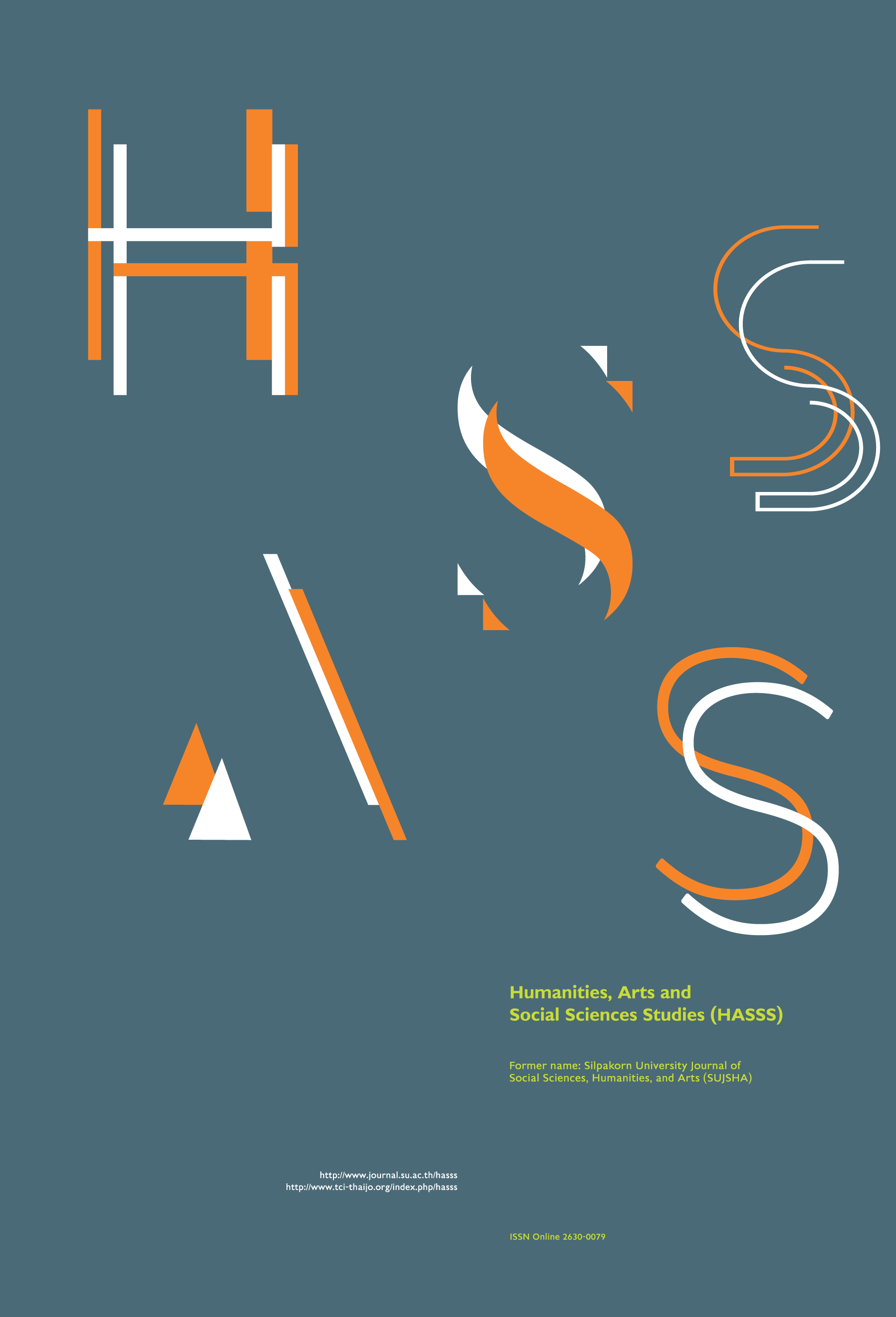The development of Peranakan influenced package design using palm paper
Main Article Content
Abstract
In South East Asia today, Peranakan is one of the most important yet almost forgotten cultures among new generations. The designation of Peranakan means descendant in Malay language which generally refer to those with Chinese origin who have established settlements primarily in Malacca and then Penang during the time of British colonial rule in Malaya. In securing their livelihoods, the Peranakan community has contributed greatly to the economy by pioneering trades with China as well as the Europeans. Therefore, in pursuit of trade opportunities, the Peranakans owned commercial crops and plantations from gambier, pepper, rubber to later, oil palm. The Peranakans are known as luxuriant, flamboyant and elaborate in their lifestyles with the adoration of ornamental art. They developed embroidery crafts uniquely influenced by the Qing, Malay and European styles. The aim of this study is to investigate the acceptance level of public consumers in the development of palm paper for Peranakan influenced package design. This study used quantitative research and material test methods. A total of 399 respondents from different demographic background in Klang Valley of Malaysia participated in this study and the results indicated significantly high level of knowledge towards material use. Results from the survey shows that more than 87% of Malaysians highly accepted the use of palm paper package as an alternative to plastic and pulp paper package. On the viability of material, more than 80% of Malaysians agreed that palm paper usage is ideal for package design. Moreover, more than 80% of Malaysians supported the benefits of palm paper package to the society, environment and economy. In general, majority accepted the idea of palm paper as a material for package design but pricing remains a sensitive issue.
Downloads
Article Details
All rights reserved. Apart from citations for the purposes of research, private study, or criticism and review,no part of this publication may be reproduced, stored or transmitted in any other form without prior written permission by the publisher.
References
Abdullah, N. and Sulaiman, F. (2013). The oil palm wastes in Malaysia. In Biomass Now - Sustainable Growth and Use, edited by M. D. Matovic, pp. 75-100. London: Intech Open. [Online URL: http://cdn.intechopen.com/pdfs-wm/44387.pdf] accessed on February 22, 2021.
Chan, S. C. (2011). The Pinang Peranakan Mansion: A Museum of Straits Chinese Cultural Heritage. Penang: Pinang Peranakan Mansion.
Chua, L. C. (2006). Sample size estimation using Krejcie and Morgan statistical power analysis: a comparison. Jurnal Penyelidikan IPBL 7: 78-86. [Online URL: http://www.ipbl.edu.my/portal/penyelidikan/jurnalpapers/jurnal2006/chua06.pdf] accessed on July 3, 2021.
Department of Statistics Malaysia. (2010). Population Distribution and Basic Demographic Characteristics. Putrajaya: Department of Statistics.
Keong, N. K. J. (2006). Economic change and the emergence of the straits Chinese in nineteenth-century Penang. Journal of the Malaysian Branch of the Royal Asiatic Society 79(2): 59-83. [Online URL: http://www.jstor.org/stable/41493673] accessed on August 14, 2021.
Khoo, J. E. (1998). The Straits Chinese: A Cultural History. Amsterdam: The Pepin Press.
Kuronuma, Y. (2014). ASEAN Entrepreneurs of Chinese Descent Expanding Presence in Acquisitions Overseas. [Online URL: http://asia.nikkei.com/Business/Asean-entrepreneurs-of-Chinese-descent-expanding-presence-in-acquisitions-overseas] accessed on February 22, 2021.
Lee, P. and Chen, J. (2012). The Straits Chinese House: Domestic Life and Traditions. Singapore: Editions Didier Millet.
Mahmood, E. and Seri, D. (2004). The Nyonya Kebaya: A Century of Straits Chinese Costume. Hong Kong: Periplus Edition.
Malaysian Palm Oil Board. (2017). The Pocketbook of Oil Palm Uses. 7th ed. Selangor: Malaysian Palm Oil Board.
National Museum. (1989). Festive Expressions Nyonya Beadwork and Embroidery. Singapore: National Museum.
Ng, W., Hon, L., Ng, F., Kamal, M. and Lim, J. (2012). Waste-to-wealth: green potential from palm biomass in Malaysia. Journal of Cleaner Production 34: 57-65. [Online URL: https://doi.org/10.1016/j.jclepro.2012.04.004] accessed on February 20, 2021.
Nordin, N., Sulaiman, O., Hashim, R. and Kassim, M. (2016). Characterization of different parts of oil palm fronds (Elaeis Guineensis) and its properties. International Journal of Advanced Science Engineering Information Technology 6(1): 74-76.
Schaschke, C. and Audic, J. (2014). Biodegradable materials. International Journal of Molecular Sciences 15(11): 21468-21475. [Online URL: https://doi.org/10.3390/ijms151121468] accessed on February 20, 2021.
Shevade, V. S. and Loboda, T. V. (2019). Oil palm plantations in Peninsular Malaysia: determinants and constraints on expansion. PLOS ONE 14(2): e0210628. [Online URL: https://doi.org/10.1371/journal.pone.0210628] accessed on 20 February, 2021.
Singh, P., Sulaiman, O., Hashim, R., Peng, L. C. and Singh, R. P. (2013). Using biomass residues from oil palm industry as a raw material for pulp and paper industry: potential benefits and threat to the environment. Environment Development and Sustainability 15: 367-383. [Online URL: https://doi.org/10.1007/s10668-012-9390-4] accessed on February 20, 2021.
Song, J. H., Murphy, R. J., Narayan, R. and Davies, G. B. (2009). Biodegradable and compostable alternatives to conventional plastics. Philosophical Transactions of the Royal Society B, Biological Sciences 364(1526): 2127-2139. [Online URL: https://doi.org/10.1098/rstb.2008.0289] accessed on 20 February, 2021.
Thompson, R. and Thompson, M. (2013). The Manufacturing Guides: Sustainable Materials, Processes and Production. London: Thames and Hudson.
Wee, P. (2015). A Peranakan Legacy: The Heritage of the Straits Chinese. Singapore: Marshall Cavendish Editions.
World Intellectual Property Organization. (2016). Patent Landscape Report: Palm Oil Production and Waste Treatment Technologies. [Online URL: http://www.wipo.int/edocs/pubdocs/en/wipo_pub_947_4.pdf] accessed on February 20, 2021.


